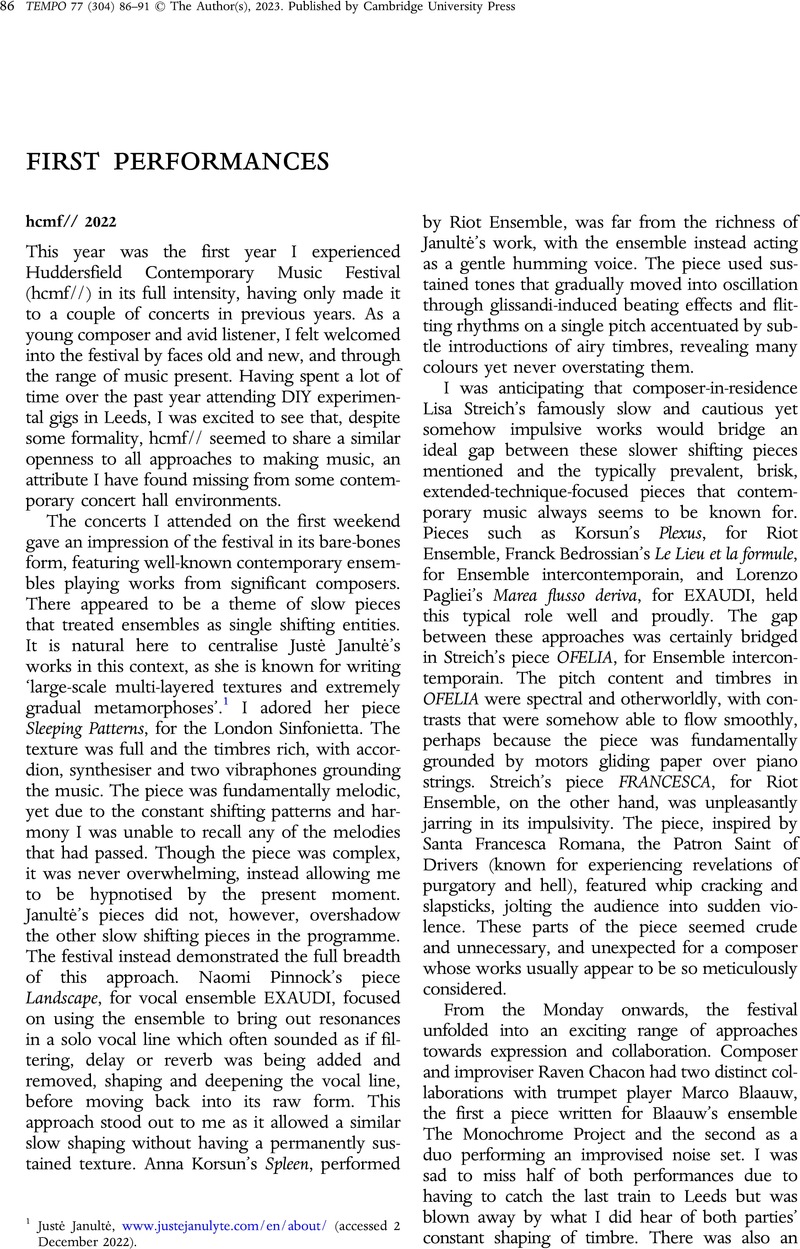No CrossRef data available.
Article contents
Abstract
An abstract is not available for this content so a preview has been provided. Please use the Get access link above for information on how to access this content.

- Type
- FIRST PERFORMANCES
- Information
- Copyright
- Copyright © The Author(s), 2023. Published by Cambridge University Press
References
1 Justė Janultė, www.justejanulyte.com/en/about/ (accessed 2 December 2022).



